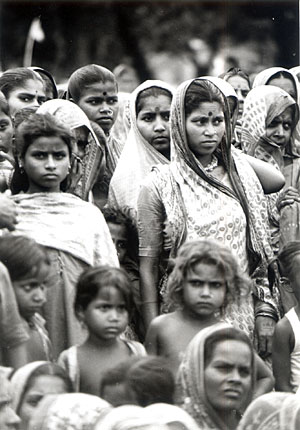 MIN RATNA BAJRACHARYA |
In South Asia the poverty rate fell from 60 per cent in 1981 to 40 per cent in 2005, not fast enough given population growth, to reduce the total number of poor people. In fact, the number of poor people in South Asia increased from 549 million in 1981 to 595 million in 2005, and from 420 million to 455 million in India, where almost three-quarters of the region's poor reside.
India has experienced slower income growth than China, which partly explains its higher poverty rate. But a country's poverty rate also depends on the degree of income inequality, a reduction in which makes growth more pro-poor, and inequality in China has, in fact, increased more rapidly than in India. So a rising tide really can lift all boats, with growth trumping inequality when it comes to poverty reduction.
Moreover, income growth has contributed to improved education. Adult literacy rates in South Asia match the global norm. But education outcomes lag behind when it comes to secondary and tertiary education, which are becoming increasingly necessary to thrive in today's world.
Nor have health indicators kept up with income growth. South Asia has the world's highest rates of malnutrition and the largest number of undernourished children, who have higher mortality rates, lower cognitive performance, and a greater likelihood of dropping out of school. More than 200,000 people in India die annually from malaria, mainly in poor regions.
And, while much of the existing international health-care assistance is focused on sub-Saharan Africa, India, along with Bangladesh, Bhutan, Nepal, Pakistan, and Sri Lanka, are just as devastated by neglected tropical diseases. Indeed, India alone accounts for one-quarter of intestinal worm infections worldwide and more than one-half of all cases of elephantiasis, leprosy, and visceral leishmaniasis.
Although gender parity in primary education has improved in the subcontinent, dropout rates for girls are higher than for boys. The dowry tradition puts pressure on girls families to marry them early, leading to a preference for sons, and thus to sex-specific abortions targeting female fetuses. Legislation, courts, and law-enforcement mechanisms have failed to address the high incidence of violence against women. Death rates for young girls are much higher than for boys.
The paradox of South Asia is that growth has been instrumental in reducing poverty and improving social outcomes, but poverty rates and social outcomes have not improved fast enough to reduce the total number of people living in misery. As a result, policymakers should begin to consider direct policy interventions to accelerate social progress, with a particular focus on human development and gender inclusiveness.
In today's uncertain world, social turmoil, gender deprivation, and rising conflict have tested countries' abilities to create jobs, promote gender equity, equip young people with skills, and design effective social protection programs. Tackling these challenges requires a clear understanding of how economic opportunities can be broadened to ensure faster poverty reduction, promote human development, and stimulate gender-inclusive growth.
Greater gender equality can contribute to economic growth and development, and major initiatives to increase opportunities for women can transform society. If more girls had gone to school a generation ago, millions of infant deaths could have been averted each year, and tens of millions of families could have been more educated, healthier, and happier.
Deeper social disparities should never be viewed as the inevitable price of rapid growth, and more egalitarian outcomes in education, health, and gender should not be considered 'second-stage' reforms. A development strategy that promotes growth first, and only then deals with human misery, is not sustainable. Policies designed to make redistribution more efficient need not hamper growth itself.
Project Syndicate
Ejaz Ghani is Economic Adviser on South Asia Poverty Reduction and Economic Management at the World Bank and editor of The Poor Half Billion in South Asia: What is Holding Back Lagging Regions?



